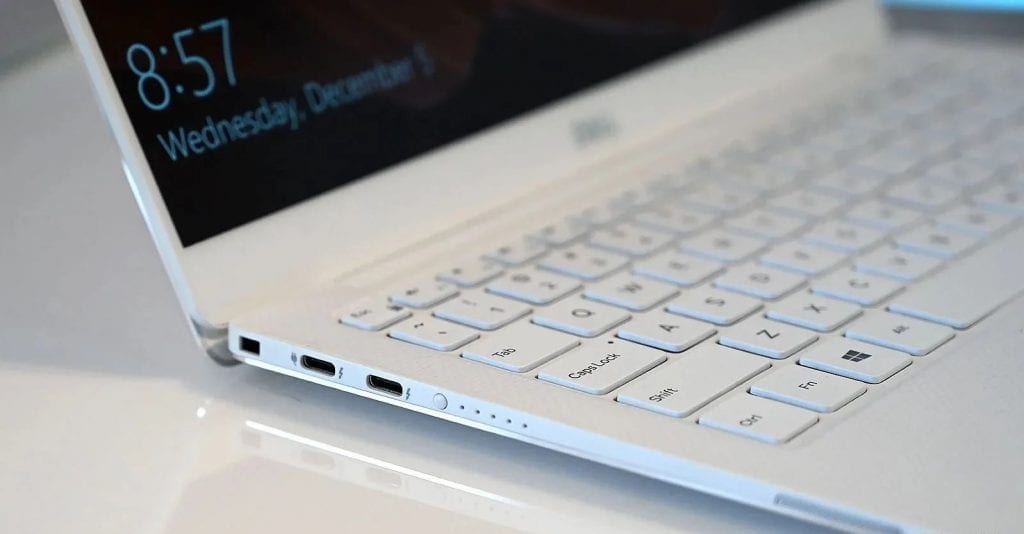About Laptops
Despite the proliferation of laptops in the workplace the reality is that they do not make good ergonomic computers for your desktop. They are even less ergonomically sound when used on your lap. However, with a little planning and a few accessories you can make your laptop work for you as a desktop computer.
The Main Ergonomic Issues with Laptops
- Keyboard spacing – laptop keyboards are often compact with a differing size and placement of some keys when compared to a regular keyboard.
- Monitor size – laptop screens are generally significantly smaller than desktop monitors.
- Monitor placement – the relation of the keyboard to monitor on a laptop is fixed. This forces the user to interact with a laptop in a poor posture, usually either with arms and hands held high or the neck and back bent low. Either of these postures can cause serious problems and pain.
- Small pointing devices – laptops usually have an integrated pointing device such as a touch pad or dot. These devices work fine to complete a task but they are generally not easy to use or overly comfortable for long periods of time.
Some Tips for Laptop Use
- Laptop Size – The larger and clearer (i.e. higher resolution) the screen is on your laptop the better. You will be less prone to leaning forward to view smaller text or images. Also remember to use the “Zoom” function inbuilt to certain programs to make documents appear larger on the screen.
- Laptop Weight -If you regularly carry your laptop between workplaces or home think about the weight of the device and any required accessories (e.g. power supply, etc). Seemingly lightweight laptops (or tablets) can become much heavier when you add the weight of all of the components together. If your laptop and associated components weighs more than 5 or 6kg then you could consider using a wheeled carry-on bag that you can pull behind you.
- Laptop Transport- If you regularly travel with your laptop then buy a lightweight model (e.g ultrabook). Carry it in a shoulder bag or backpack with wide padded shoulder strap/s or a small wheeled carry-on bag. Here is a link to a site that lists some lightweight options to consider https://www.ultrabookreview.com/4219-the-lightest-ultrabooks/
- Laptop Glare– Some laptops have glossy screens (e.g. Macbooks) which can create annoying glare. This can be managed by moving to another location where direct back-light is minimised or fit a matte glare reducing screen cover.
- Laptop Posture- If you are working on your laptop for longer than 30 minutes think about the positioning of your device – elevate it on a stand or books to position the top of the screen at or just below eye level – use an external keyboard and mouse to ensure your forearms can remain parallel to the desk surface and wrists are in a neutral alignment.





